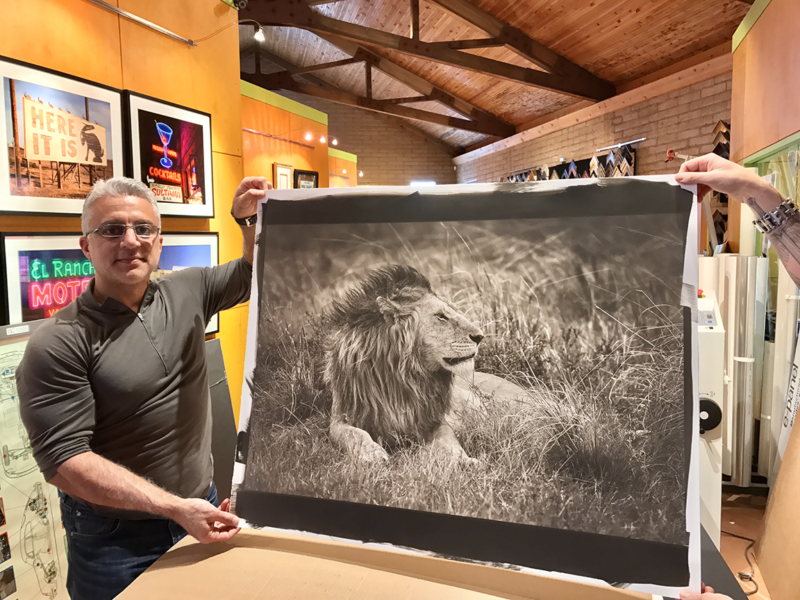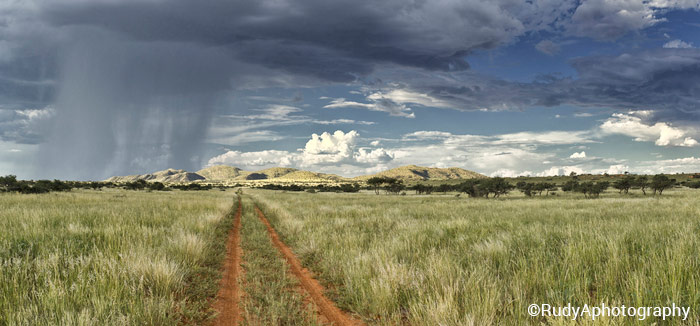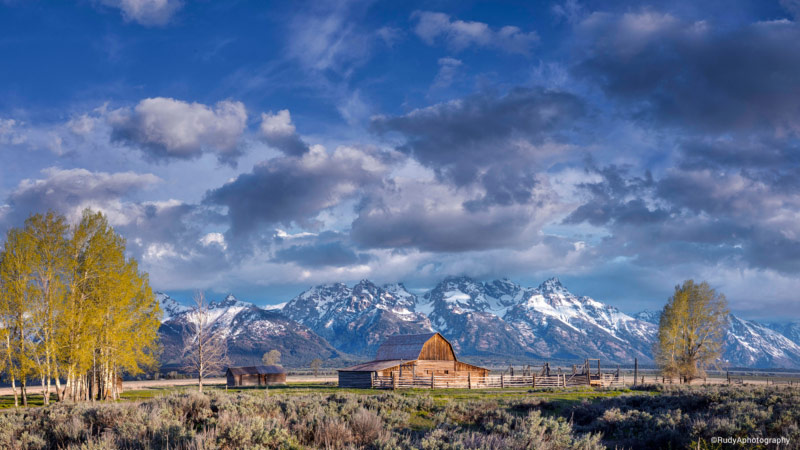Photographer Profile
Landscape Photographer Rudy Atallah
A beautiful view in Jackson Hole Wyoming
Editor’s Note: Our most recent three Photographer Profiles have been a product photographer, a professional headshot artist, and a fashion shooter. While many of our clients are professional photographers making their living in a studio, we also have many clients who are enthusiasts or professionals shooting in the great outdoors. Given the current cold weather in New York we thought we’d feature one of our clients who is best known for his work under the hot African sun.

New technology combined with traditional printing methods
Rudy Atallah is a landscape photographer whose passion for creating images has kept him looking for new adventures across decades and continents. His body of landscape work encompasses the US, Africa, and Europe. He started dabbling in photography during the first Gulf war while serving in the US Air Force. A decade later he purchased his first digital camera while stationed in West Africa, and developed a portfolio of the Sahara which later turned into a book. Now officially “retired” his pace of shooting has only increased.
DT: You’ve traveled to so many places to shoot. Any favorites?
Rudy: Jackson Hole Wyoming and Kenya, hands down.

A herd of elephants in Africa
DT: Why landscapes?
Rudy: Imagine a field with mountains towering in the distance. The sun has yet to rise. It’s quiet – peaceful. No emails or texts, just nature. This is why I shoot landscapes. For me, it’s an experience unlike any other.
DT: You’ve shot in a large variety of conditions: hot and cold, wet and dry. Do any locations stand out as particularly challenging on you and your gear?
Rudy: Africa’s weather poses a particular challenge. One moment is sunshine and dust; the next it’s raining. I’ve learned that I must be ready to access my gear at a moments notice, and cover it up just as quickly. Such fast-changing weather constrains the amount of equipment that is practical to carry. Given all this I try hard to plan everything out beforehand, to build a picture in my mind of what I want to capture. I approach it with the forethought and pre-visualization normally given to paintings.

The weather changes quickly in Africa
DT: Previously you used a Canon. What made you switch to Medium Format?
Rudy: “Switch” makes it sound as if I was shooting Canon one day and an IQ1 50mp the next. It wasn’t like that. I had been talking with Lance and attending events hosted by Digital Transitions for a few years before pulling the trigger. My first medium format system was a Leaf Aptus 28. It was a great back, especially when it came to color and tonality. But it had some significant limitations, especially since I wanted to use it in challenging environments. It was a pleasant surprise when my dealer, Digital Transitions, was able to take it as a trade-in toward an Phase One IQ1 50 with a DF+ body. Most cameras, like Canon/Nikon you either have to sell (at a great loss) on eBay or relegate to the back of your closet. Recently I’ve upgraded to the Phase One XF and the new Blue Ring lenses.
DT: What differences do you find between medium format and small format?
Rudy: From that first Leaf Aptus to the IQ1 50mp the image quality has been consistently excellent. My work is heavy on texture, color, and gradations and medium format has a look in this regard that I was never able to achieve with my Canon system. I’ve also really appreciated that Phase One listens to it’s customers. There is something special about knowing that you’re not one of millions of customers, and that you’re working with a company that implements changes based on users’ requests and not just for the sake of making changes. Having owned several generations I’ve noticed continuous and significant improvement in the Phase One system. The XF really capped that improvement; it’s made me the happiest camper in the world.
Editor’s Note: For more of Rudy’s work visit rudyaphotography.com


